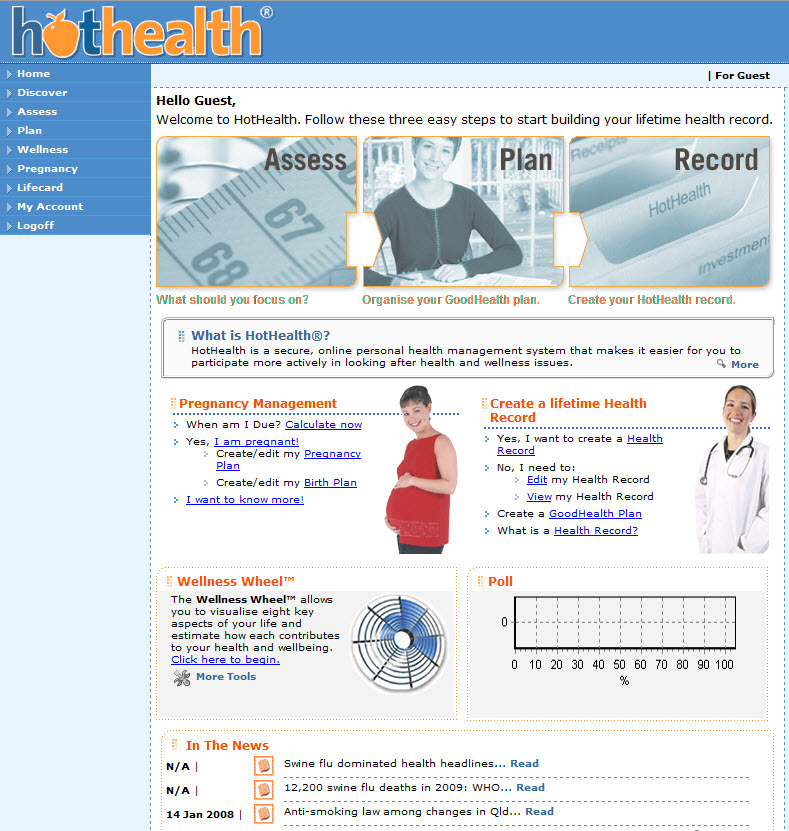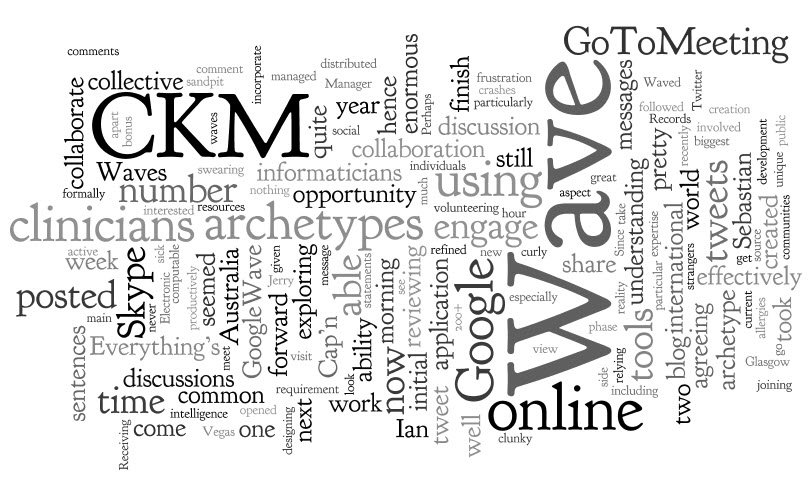 In 1999 four clinicians and an ex-CIO gathered around my kitchen table and week by week we hatched a plan for a Personal Health Record (PHR) which we hoped could revolutionise healthcare. At that time a PHR was not at all mainstream. Very few clinicians we spoke to thought it was a good idea at all. Many held a very paternalistic view that patients were not capable to handle their health information, and that a PHR would not ever be trusted as a useful resource (- for some reason a verbal a history was acceptable but a patient entered record of some sort was not)! Patients were also pretty passive and had to be convinced that they could be supported to manage their health information in a similar way that they managed their finances!
In January 2000, those last heady days of the dot-com era we started development in earnest, then rode the rollercoaster and navigated the fallout of the dot-com crash. HotHealth
In 1999 four clinicians and an ex-CIO gathered around my kitchen table and week by week we hatched a plan for a Personal Health Record (PHR) which we hoped could revolutionise healthcare. At that time a PHR was not at all mainstream. Very few clinicians we spoke to thought it was a good idea at all. Many held a very paternalistic view that patients were not capable to handle their health information, and that a PHR would not ever be trusted as a useful resource (- for some reason a verbal a history was acceptable but a patient entered record of some sort was not)! Patients were also pretty passive and had to be convinced that they could be supported to manage their health information in a similar way that they managed their finances!
In January 2000, those last heady days of the dot-com era we started development in earnest, then rode the rollercoaster and navigated the fallout of the dot-com crash. HotHealth was launched in November 2000. My clinical colleagues were still not very enthusiastic about the concept. The business model was not easy. Large companies, health insurers, hospitals, pharmaceutical companies - everyone could see how a PHR would be 'useful', but none would commit. The funding dried up and it/we were acquired by listed company in 2002.
was launched in November 2000. My clinical colleagues were still not very enthusiastic about the concept. The business model was not easy. Large companies, health insurers, hospitals, pharmaceutical companies - everyone could see how a PHR would be 'useful', but none would commit. The funding dried up and it/we were acquired by listed company in 2002.
In the US, there were a fair number of PHRs in 2000, maybe even as many as 50. DrKoop.com (now apparently HealthCentral) was the clear leader at the time; WebMD is probably the only significant one remaining. Our annual market research for competitors showed a huge turnover - PHRs were appearing and disappearing at a great rate!
But the evidence was starting to come in and support the concept - Kate Lorig's work at Stanford on supported self-management in arthritis was working well on paper and face-to-face. We applied some of these principles to HotHealth plus health summaries, prevention plans, wellness promotion, quality health information etc - the kinds of features we are used to seeing in PHRs now.
Well, HotHealth still exists and has had some modest success, mostly in the spin off of a PHR for older children and teenagers with insulin dependent diabetes which ran between 2003 and 2005 - Betterdiabetes - but it never blossomed as I had hoped. Was it the timing? Was it the business model? Was Australia too small a market. Yes to all of these, and much more - it was harder than we anticipated.
- but it never blossomed as I had hoped. Was it the timing? Was it the business model? Was Australia too small a market. Yes to all of these, and much more - it was harder than we anticipated.
In 2005 I was asked to write a commentary in Australian Health Review - "The patient’s memory stick may complement electronic health records"(PDF of full text). Re-reading it now, I can't help but be disappointed that not a lot has really changed in terms of integration and data exchange between clinicians and patients. We have made some small progress, but I thought the revolution would have happened by now.
Amusingly I think that my final paragraph in that commentary, written back in September 2005, still stands true.
"A grassroots push by consumers wishing to hold, own and manage their own health information has the potential to make relatively quick, inexpensive and significant changes to the way healthcare is delivered, to support and encourage consumer input to their own health information record, and kick-start electronic health record development in Australia. And eventually when our individual PHRs evolve to amalgamate and integrate with the HealthConnect* implementation, we will all be beneficiaries of an integrated and interoperable health system, meeting the needs of all participants in a timely manner, and most importantly enhancing health outcomes, and minimising risk."
It's just been a longer journey that I first thought!
Reflecting today, I think that those four words in bold - "grassroots push by consumers" - are important. Health care consumers are now better educated and equipped than ever before to decide what it is that they want from eHealth. Let's complement the top-down national program approach with a powerful, bottom-up, consumer-driven kickstart to eHealth!
More than just requesting our data in a readable format, more than collecting a heap of printed pages or folders of pdfs, we should be requesting our data be in a format that we can do something with, data that we can actually re-use. Think of all the little bits of health information that have been created and left behind after each consultation with your family doctor and at each hospital visit. And of course don't forget your dentist and physio, your naturopath who also prescribes for you nor the doctor you saw only once while on holiday in some far off place. Think of what we could do with all that data; if we could only aggregate all of these snippets of information together. The PHR is the most likely place for our fragmented data to come together; the result being a broader, deeper and richer record than could be achieved by any one provider!
I still firmly believe that Personal Health Records have the potential to transform the way we deliver health care. It may take longer than we all anticipate but the PHR is a very powerful grassroots approach to eHealth. Be patient;-)
*HealthConnect was Australia's eHealth program at the time - now totally MIA and no evidence of it exists online!



